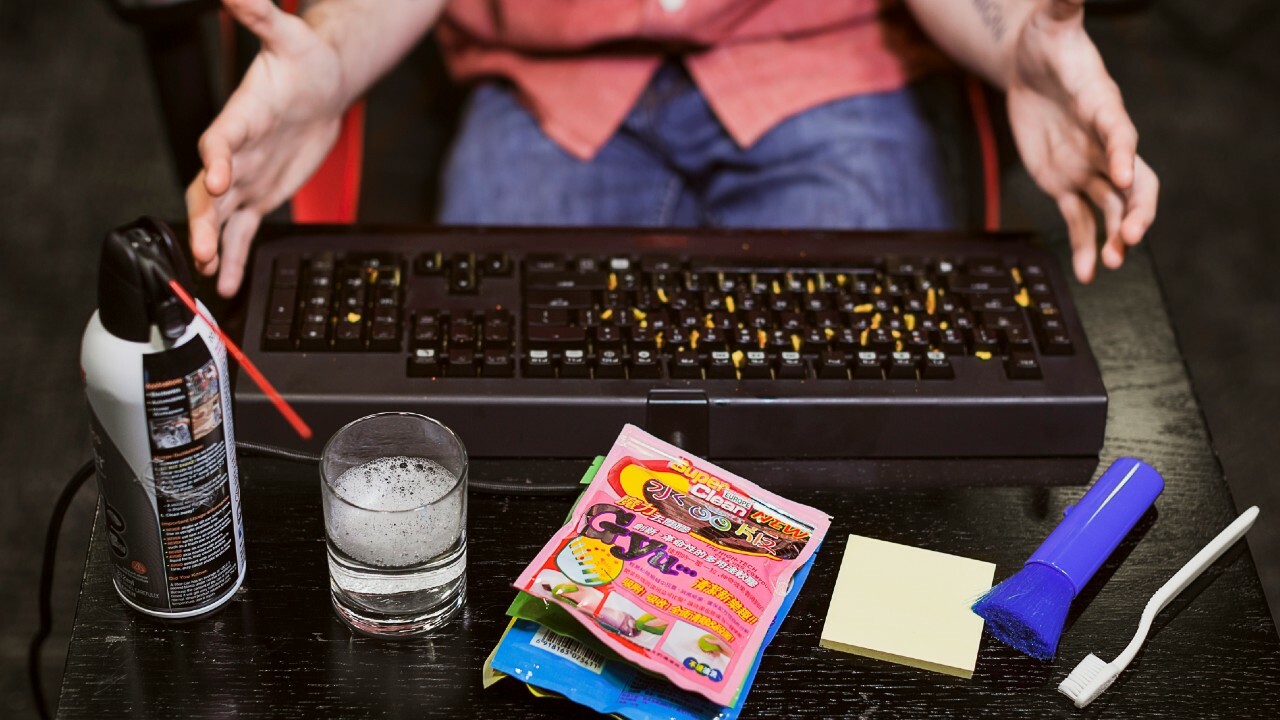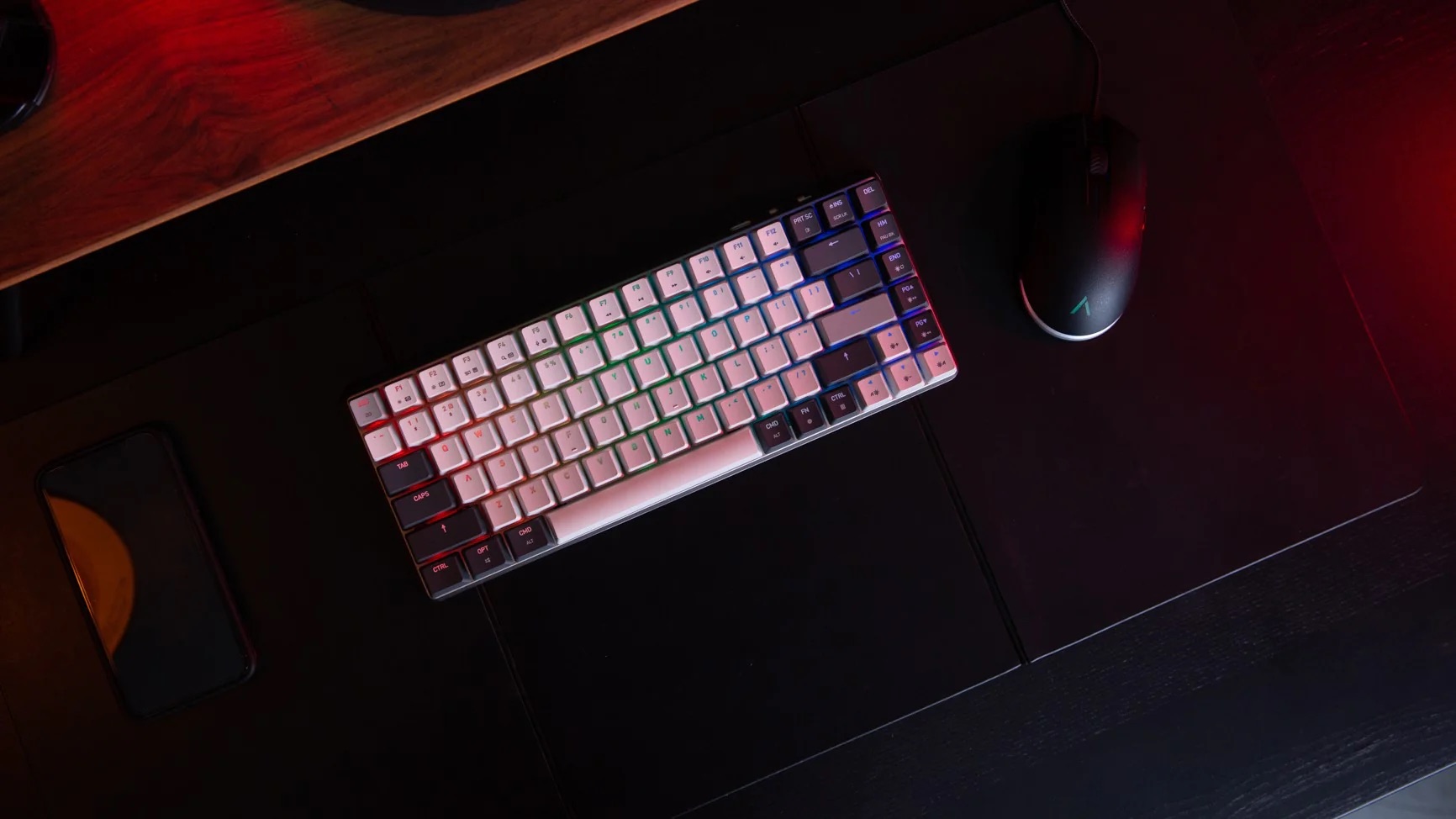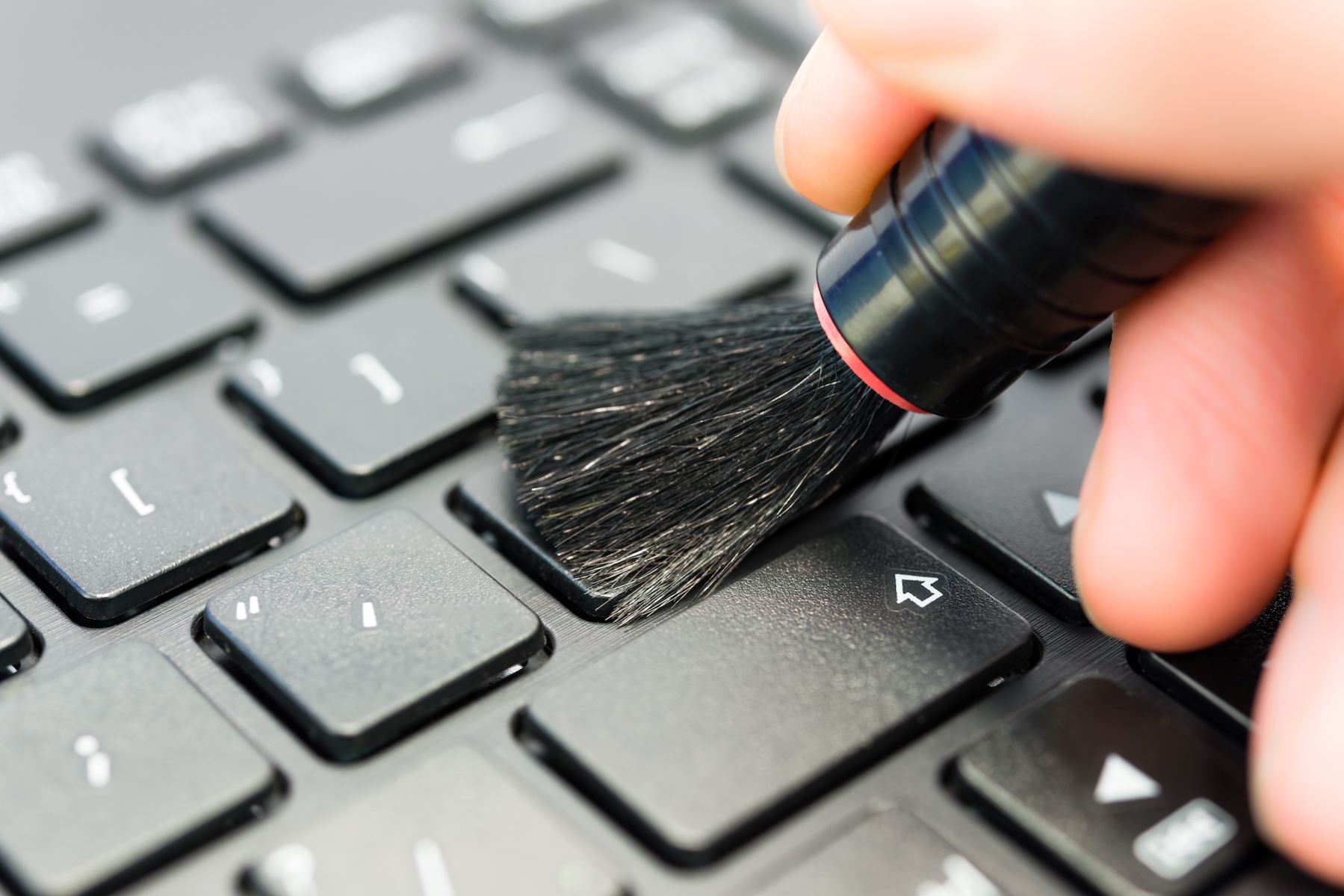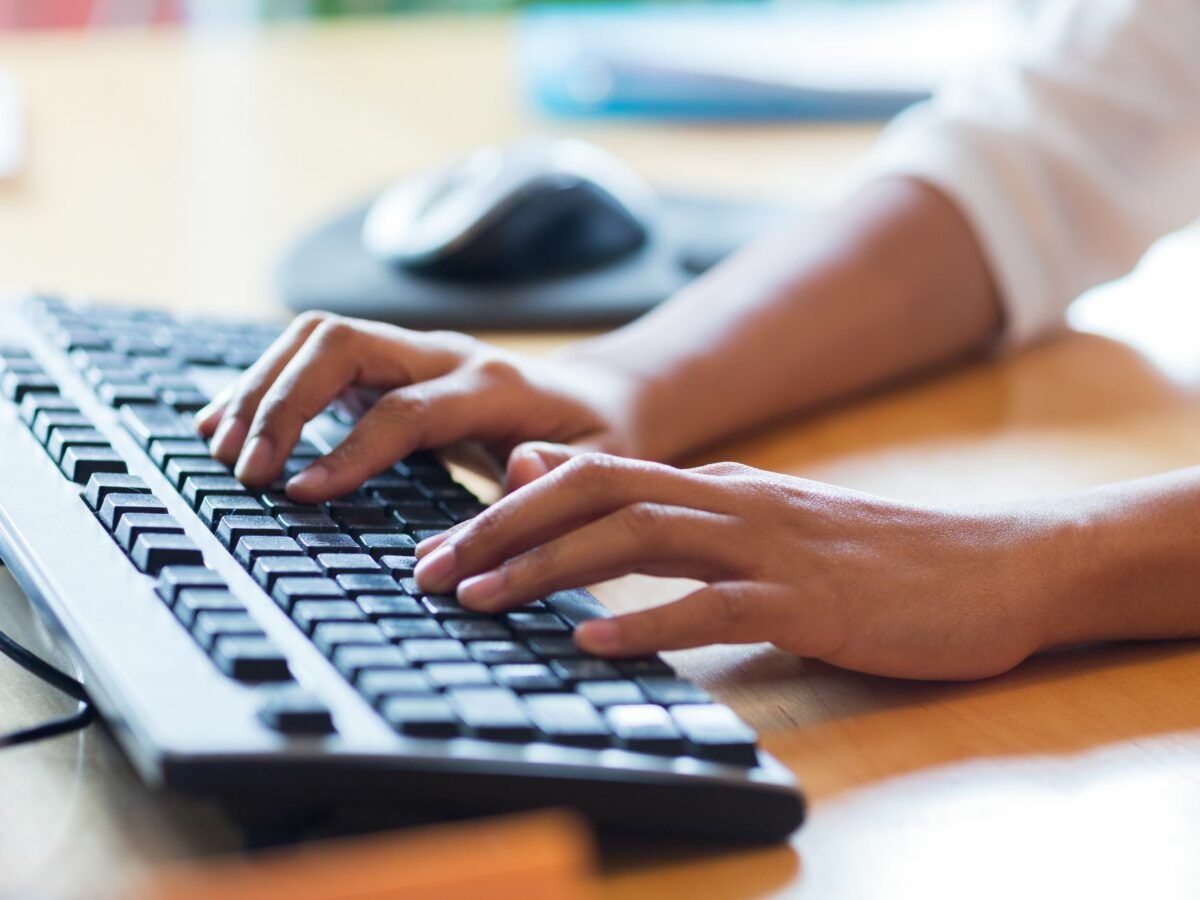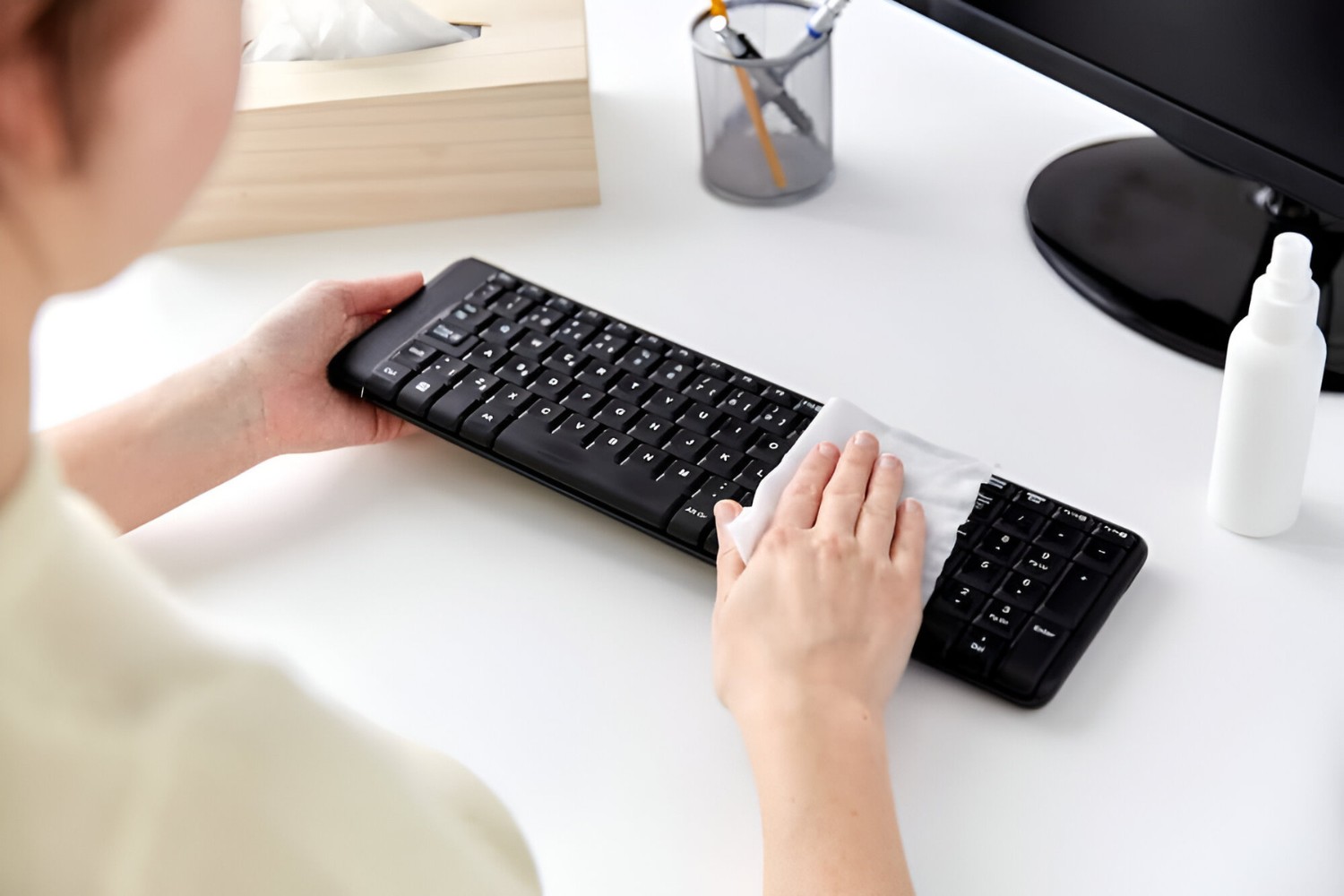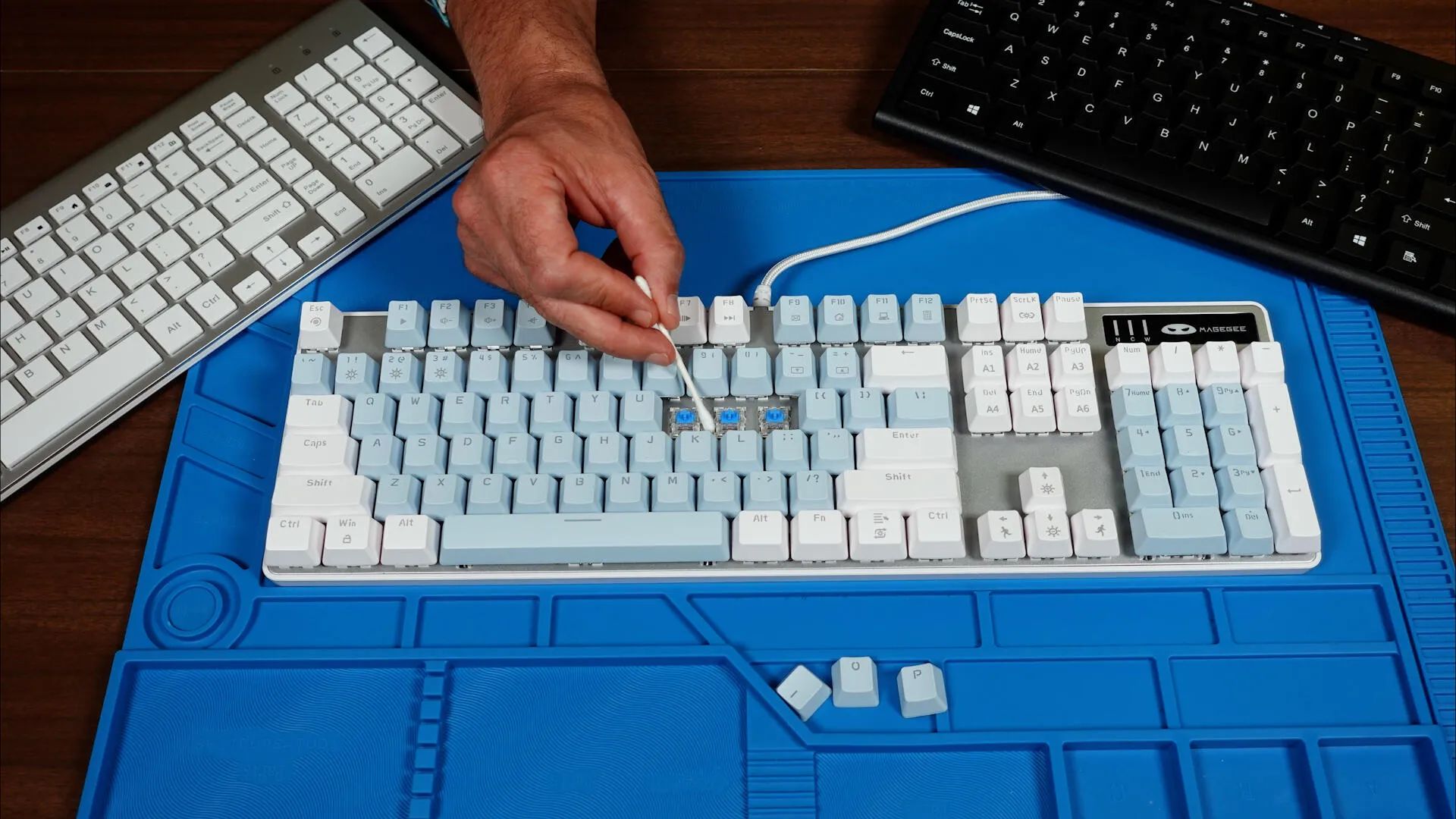Introduction
A clean computer keyboard is essential for optimal performance and hygiene. Over time, keyboards can accumulate dust, dirt, food particles, and even bacteria, which can impact both the functionality and cleanliness of the keyboard. Regularly cleaning your keyboard not only helps to maintain its longevity but also ensures a healthier typing experience.
In this guide, we will provide you with step-by-step instructions on how to clean your computer keyboard effectively. By following these simple techniques and using the right materials, you can restore your keyboard to its pristine condition.
As you proceed with the cleaning process, it is crucial to note that different keyboard types may require slightly different cleaning methods. We will discuss general cleaning techniques that can be applied to most keyboards. However, if you are unsure about the cleaning process for your specific keyboard model, it is recommended to refer to the manufacturer’s instructions or seek professional advice.
Before we dive into the cleaning process, make sure to power off your computer and unplug the keyboard. This will prevent any accidental input or damage to your computer system while cleaning.
Now, let’s gather the materials and get started with cleaning your computer keyboard.
Materials Needed
To effectively clean your computer keyboard, you will need the following materials:
- A soft, lint-free cloth
- Isopropyl alcohol or a mild cleaning solution
- Cotton swabs or a small brush
- Compressed air canister
- Microfiber cloth or paper towels
- Disinfecting wipes
The soft, lint-free cloth will be used to wipe down the keys and surfaces of the keyboard. It is important to use a non-abrasive cloth to avoid scratching the surface of the keys.
Isopropyl alcohol or a mild cleaning solution is necessary to remove any grime or sticky residue from the keys. It is recommended to dilute the cleaning solution with water to prevent any damage to the keyboard.
Cotton swabs or a small brush will come in handy to clean the hard-to-reach areas between the keys. The small bristles or cotton tips will help remove any debris or dirt stuck in these crevices.
A compressed air canister is essential for blowing away any loose debris or dust particles that may have accumulated under the keys. This will help dislodge and remove hidden dirt.
Lastly, a microfiber cloth or paper towels will be used to dry the keyboard after cleaning. These materials are absorbent and will prevent any moisture from affecting the keyboard’s performance.
Disinfecting wipes are optional but highly recommended for sanitizing the keyboard and eliminating bacteria and germs. This step is particularly important if multiple people use the keyboard or if you frequently eat or drink at your desk.
With these materials prepared, you are now ready to start cleaning your computer keyboard.
Step 1: Unplug the Keyboard
Before you begin cleaning your computer keyboard, it is crucial to unplug it from your computer or laptop. This step ensures your safety and prevents any accidental key presses or damage to your system.
If your keyboard is connected via USB, simply locate the USB cable and gently unplug it from your computer. For wireless keyboards, turn off the power switch or remove the batteries, if applicable.
By disconnecting the keyboard, you eliminate the risk of any electrical interference or accidental command inputs while cleaning. It also allows you to have better access to all areas of the keyboard without the constraints of a wired connection.
Take extra caution when handling the keyboard and its cables. Avoid pulling on the cord forcefully or at an angle that may cause any damage. A gentle and careful approach will ensure that your keyboard remains intact throughout the cleaning process.
Once the keyboard is disconnected, you can proceed to the next step and begin cleaning off any loose debris from the surface.
Step 2: Shake Off Loose Debris
After unplugging the keyboard, the next step is to remove any loose debris that may have accumulated between and on the keys. Over time, dirt, crumbs, and other particles can find their way into the crevices of the keyboard, affecting its performance and cleanliness.
To shake off the loose debris, hold the keyboard upside down and gently tap or shake it. You can lightly tap the back of the keyboard or hold it at an angle and give it a few gentle shakes. This will dislodge any loose particles, thereby making it easier to clean the keyboard later on.
While shaking the keyboard, you may notice small objects or debris falling out. It’s important to be careful and avoid dropping the keyboard or causing any damage during this process. Tip the keyboard in different directions to ensure that any debris trapped in between the keys also falls out.
Alternatively, you can use a small, soft-bristled brush or a can of compressed air to remove the loose debris. The brush can be gently swept over the keys and in between the crevices to dislodge any remaining particles. If using compressed air, use short bursts to blow away the debris from the keyboard’s surface.
Once you have shaken off as much loose debris as possible, you can proceed to the next step, which involves using compressed air to further clean the keyboard.
Step 3: Use Compressed Air
Using compressed air is an effective way to remove stubborn dirt, dust, and debris from your keyboard. Compressed air canisters are available at most electronics or office supply stores and provide a safe and efficient method to clean in and around the keys.
Before using the compressed air, ensure that you carefully read and follow the instructions provided with the canister. This will ensure that you use the product safely and effectively.
To use compressed air, hold the canister upright and at a distance from the keyboard. It is essential to maintain a safe distance to prevent any potential damage to the keys or internal components.
Direct the nozzle of the compressed air canister towards the gaps and spaces between the keys. Press the trigger or button to release short bursts of air into these areas. The force of the air will dislodge any dirt or debris that may be trapped.
Move across the keyboard, paying special attention to the corners and edges where particles tend to accumulate. Repeat the process for all the keys, ensuring that you cover the entire surface of the keyboard.
While using compressed air, it is recommended to keep your face and eyes at a safe distance from the keyboard to avoid inhaling any loosened particles. Additionally, it is advisable to perform this step in a well-ventilated area to allow the dust and debris to disperse easily.
Once you have used the compressed air to remove the dirt and debris, you can move on to the next step, which involves cleaning the keys with a cloth and cleaning solution.
Step 4: Clean the Keys with a Cloth and Cleaning Solution
After using compressed air to remove loose debris, it’s time to clean the keys themselves. To do this, you will need a soft, lint-free cloth and a cleaning solution. Isopropyl alcohol or a mild cleaning solution diluted with water works well for this purpose.
Dampen the cloth with the cleaning solution, ensuring it is not dripping wet. Gently rub the cloth over each key, applying light pressure to remove any dirt or grime. Pay special attention to any sticky or heavily soiled keys, as they may require a little extra cleaning.
When cleaning the keys, it is important to avoid using excessive moisture. Excess liquid can seep under the keys and potentially damage the internal components of the keyboard. Therefore, use a minimal amount of cleaning solution on the cloth.
As you clean, you may notice that some keys have symbols or characters that are prone to fading or wearing off. To protect these markings, avoid rubbing them vigorously. Instead, use a gentle circular motion to clean around the symbols while focusing on the rest of the key.
Continue cleaning each key until all visible dirt and grime are removed. If necessary, you can dampen the cloth with the cleaning solution again as you progress through the keyboard.
Once you have cleaned all the keys, take a dry microfiber cloth or paper towels and wipe down the entire keyboard surface. This will remove any excess liquid and ensure that the keyboard is thoroughly dried.
With the keys now clean and dried, it’s time to move on to the next step and clean between the keys using a brush or cotton swab.
Step 5: Clean Between the Keys with a Brush or Cotton Swab
Cleaning between the keys is essential to remove any dirt or debris that may be trapped in the narrow gaps. For this step, you will need a small brush or cotton swabs.
If using a brush, ensure that the bristles are soft and gentle to avoid scratching the keys or causing any damage. A small, soft-bristled toothbrush or a specific keyboard cleaning brush works well for this purpose.
If using cotton swabs, make sure they are not overly wet with the cleaning solution to prevent any excess liquid from seeping into the keyboard.
Start by gently running the brush or cotton swab between each row of keys, moving from left to right or vice versa. Using a sweeping or circular motion, carefully dislodge and remove any debris that may be trapped in the crevices.
For stubborn dirt or grime, you can dampen the brush or cotton swab with a small amount of cleaning solution and proceed to clean the affected areas. Take care not to apply excessive moisture, as it can seep under the keys and potentially cause damage.
Continue cleaning between each row of keys until you have covered the entire keyboard. Pay attention to the corners and edges, as these areas are more prone to accumulating debris.
If you are using cotton swabs, it is advisable to use a fresh swab or switch to a clean section of the swab as you move along the keyboard. This prevents the transfer of dirt and grime from one area to another.
Once you have finished cleaning between the keys, take a moment to review the overall cleanliness of the keyboard. If any stubborn stains or grime persist, you can repeat the previous steps or use specialized cleaning tools, such as keyboard cleaning gels, if recommended by the manufacturer.
Now that your keyboard is clean both on the surface and between the keys, it’s time to proceed to the next step: disinfecting the keyboard.
Step 6: Disinfect the Keyboard
Disinfecting your keyboard is an important step to eliminate bacteria and germs that may be present on its surface. This is particularly crucial if you share your keyboard with others or if you frequently eat or drink near your computer.
To disinfect your keyboard, you can use disinfecting wipes that are specifically designed for electronic devices. These wipes are pre-moistened with a disinfectant solution that will kill bacteria and germs effectively.
Take a disinfecting wipe and gently rub it over the keys and the surface of the keyboard. Make sure to cover all areas, including the sides and corners. Pay extra attention to frequently touched keys, such as the Enter key or the spacebar.
While disinfecting, avoid pressing the keys forcefully or allowing excess liquid to drip into the keyboard. This will protect the electronic components from potential damage.
If you do not have disinfecting wipes, you can make your own disinfectant solution by mixing isopropyl alcohol and water. Dampen a soft cloth with the solution and follow the same process of wiping down the keyboard, ensuring thorough coverage.
Allow the disinfectant to air dry on the keyboard. This will ensure that it has sufficient contact time with the surface to effectively kill any bacteria or germs.
Remember to wash your hands thoroughly after handling disinfecting wipes or cleaning solutions to avoid any potential skin irritation.
Now that your keyboard is disinfected, it’s time to let it dry before reconnecting it to your computer. Proceed to the next step to ensure proper drying.
Step 7: Dry the Keyboard
After cleaning and disinfecting your keyboard, it is important to ensure that it is thoroughly dried before reconnecting it to your computer. This step helps prevent any potential damage that moisture may cause to the keyboard’s internal components.
Start by taking a dry microfiber cloth or paper towels and gently patting the keys and the surface of the keyboard. This will help absorb any excess moisture left behind from the cleaning and disinfecting process.
Ensure that the cloth or paper towels are dry and do not leave any lint or fibers on the keyboard’s surface. If needed, you can use a separate cloth or towel for drying purposes.
Allow the keyboard to air dry naturally for some time. This will ensure that any remaining moisture evaporates from the keys and the crevices.
It is recommended to leave the keyboard undisturbed in a well-ventilated area for at least an hour or until it is visibly dry to the touch.
Avoid using any external heat sources, such as hairdryers or heaters, to speed up the drying process. These heat sources can damage the keyboard and its components.
During the drying process, avoid reconnecting the keyboard or using it. Patience is key to allow sufficient time for the keyboard to dry completely.
Once you are confident that the keyboard is thoroughly dried, you can proceed to the final step and reconnect it to your computer.
By following these steps and allowing the keyboard to properly dry, you can ensure the longevity and optimal performance of your computer keyboard.
Step 8: Reconnect the Keyboard
Now that your keyboard is clean, disinfected, and thoroughly dried, it is time to reconnect it to your computer or laptop.
For USB keyboards, locate the USB port on your computer and gently insert the USB connector into the port. Ensure that the connector is inserted firmly but not forcefully to avoid causing any damage to the port or the connector.
If you are using a wireless keyboard, switch on the power button or insert fresh batteries, as per the manufacturer’s instructions. Make sure that the keyboard is within the range of the receiver to ensure a stable connection.
Once the keyboard is connected, give it a quick test by typing a few keys to ensure that it is functioning properly. Check for any stuck or unresponsive keys and address them if necessary.
If you find any issues with the keyboard’s functionality after reconnecting, double-check that it is securely plugged in or that the wireless connection is properly established.
Finally, take a moment to appreciate your clean and refreshed keyboard, ready to provide you with a smooth and hygienic typing experience.
Remember to maintain regular cleaning habits to prevent the accumulation of dirt and debris on your keyboard. By cleaning it periodically, you can extend the lifespan of your keyboard and ensure optimal performance.
With your freshly cleaned and reconnected keyboard, you can now resume your work or enjoy leisurely browsing without any hindrances.
Conclusion
Cleaning your computer keyboard is an essential task that not only enhances its performance but also maintains a healthy and hygienic workspace. By following the step-by-step guide outlined above, you can effectively and safely clean your keyboard to restore it to its pristine condition.
Starting with unplugging the keyboard and shaking off loose debris, you then progress to using compressed air to remove stubborn dirt. Afterward, you clean the keys with a cloth and a cleaning solution, ensuring thorough coverage.
Cleaning between the keys is crucial to remove any trapped debris, which can be achieved with a brush or cotton swabs. Disinfection is the next step, using disinfecting wipes or a diluted cleaning solution to eliminate bacteria and germs.
Drying the keyboard completely before reconnecting it is vital to prevent any moisture-related damage. Finally, you can confidently reconnect the keyboard to your computer or laptop and enjoy a clean and optimal typing experience.
Remember to regularly clean your keyboard to prevent the buildup of dirt, grime, and bacteria. This not only ensures its longevity but also promotes a more hygienic working environment.
By implementing these cleaning practices, you can maintain the performance of your keyboard, contribute to its longevity, and create a healthier workspace. So, take some time to give your keyboard the attention it deserves and enjoy a clean and refreshing typing experience.







